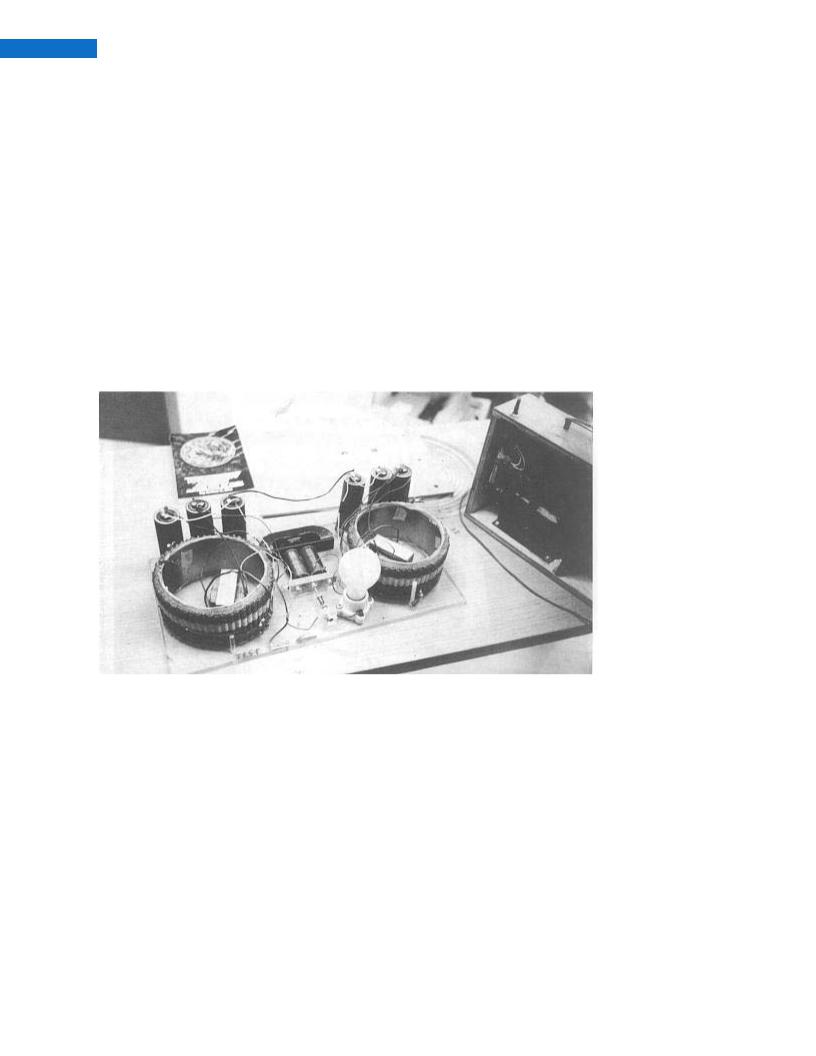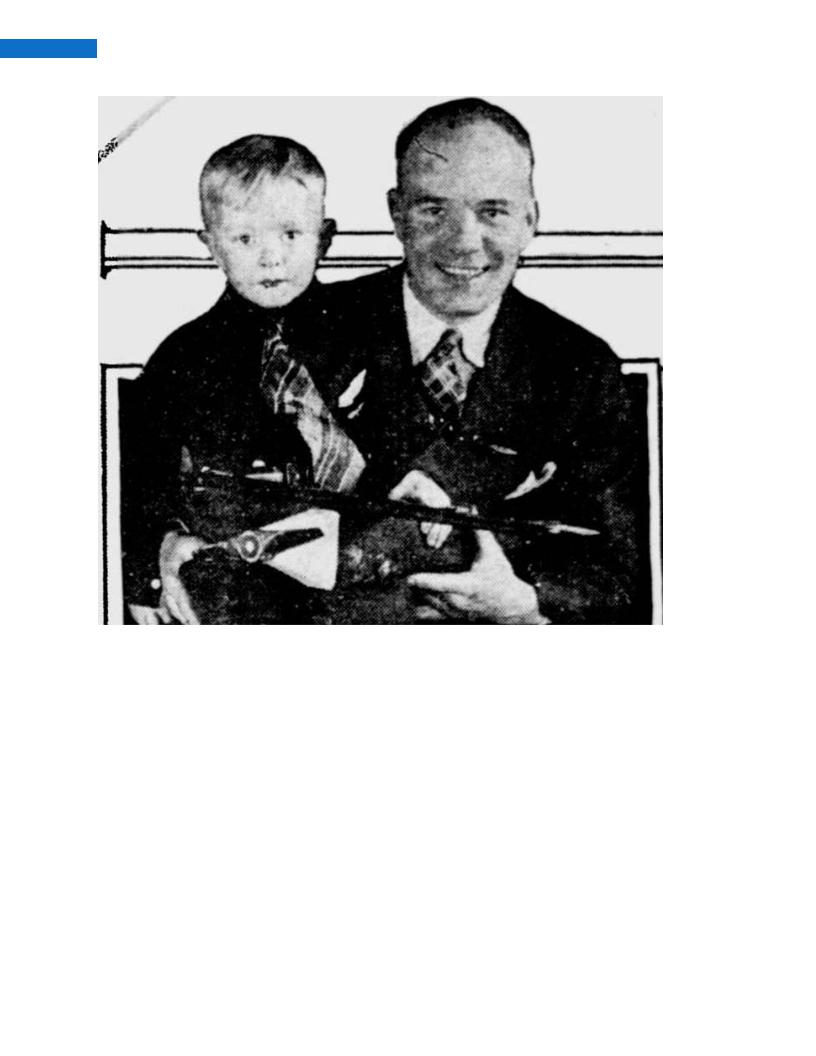

4 Hendershot Fuel Less Generator
“The greatest invention of the age”
On February 28, 1928, a man called Lester Hendershot made frontpage headlines across the nation with his invention of a "fuel less motor." Hendershot managed to develop power with his device by cutting the earth's magnetic field as our normal generator cuts its own magnetic field.
Not claiming his device to be a perpetuum mobile, Hendershot explained that it was tapping the earth's magnetic field and rotation as its energy source. The Hendershot Device concerns a self-running oscillator.
There are a pair of large air-core coils positioned in a "basket weave" pattern, cylindrical capacitors inside the coils, several highvalue capacitors, a couple of standard transformers and a
4

5 Hendershot Fuel Less Generator
permanent-magnet "buzzer" for a regulator. The two large coils are tuned to resonate with each other.
Lester Hendershot lived in a small house near the railway line in Elizabeth, Pennsylvania. He had not been many studies, but he took courses in mechanics at Cornell University.
Hendershot's machine was not actually a motor, but a generator. It developed electricity which could power another motor but did not produce any usable motion itself. The idea for the generator first came to him in a dream in his early twenties. He forgot the idea for several years and was motivated to start working on it to replace the broken motor in his child's toy airplane.
5

6 Hendershot Fuel Less Generator
-out radio and would only operate when lined up north and south. After two years of more work he was able to develop a model that worked facing any direction.
Word traveled quickly that Hendershot had developed an unusual invention and he was invited by Air Corps Commander Lamphier to demonstrate his model at Selfridge Field in Detroit. Lamphier was greatly impressed and immediately had technical crews begin developing a larger model.
6

7 Hendershot Fuel Less Generator
Charles Lindbergh observed the machine in operation and also was very impressed. William Mayo, chief engineer of Ford Motor Company, and William Stout, developer of the three-motor design of airplanes popular in the `20's and `30's, also investigated the device in operation and pronounced it genuine.
The model developed at Selfridge Field was able to light two 100watt light bulbs or power a small sewing machine. Pilots and technicians at the Field praised it as the "
." greatest invention of the
age
Here are some extracts from newspapers, which prove the efficiency of Hendershot’s fuel less generator:
New York Times ( Sunday, February 26, 1928 )
"Fuelless Motor Impresses Experts"
W.B. Stout Says, Invention Works Uncannily --- Washington Thinks It’s Important ~ Built On A Radio Principle ~ Armature Winding New --
Invention InspirFebd By Young Son -- Lindbergh Flies Here
Detroit, Mich, . 25 -- W.B. Stout, head of the Stout Air Lines and designer of the all-metal tri-motored Ford Monoplane, declared here today that he had seen what he characterized as an "impressive" demonstration of the Hendershot fuelless motor two weeks ago in Pittsburgh.
Lester J. Hendershot, the inventor, and his associate. D. Barr Peat, who is manager of the Bettis Field at McKeesport, demonstrated the motor secretly yesterday in a hangar at Selfridge Field. This block
7

8 Hendershot Fuel Less Generator
test was witnessed by Major Thomas G. Lanphier, Clonel Charles A. Lindbergh and others.
It was explained today that the model used in the demonstration was a much smaller machine than an actual working motor capable of developing enough power to lift and propel an airplane.
Its designers claim for it that it runs on an electromagnetic principle, by which it draws its force directly from the earth’s field, and through the properties within the motor itself transforms these electric currents into power that can be delivered efficiently at a propeller shaft.
Calls Demonstration Uncanny
"The demonstration was very impressive", Mr. Stout said. "It was actually uncanny. I would like very much to see how a large model designed to develop power enough to lift an airplane would operate".
Mr. Stout said the model he saw was about the size of the tiny motors used in vacuum cleaners.
"I was told that the revolutionary feature was a hereto unknown manner of winding the armature", Mr. Stout continued. "Hendershot said he had succeeded in winding it in such a way that it draws energy directly from electrical currents which exist constantly in the air or in the ground. Such sources of cheap and inexhaustible power, of course, never have been reached before. The small model appeared to operate exactly as Hendershot explained that it did".
8
